PROTECT YOUR DNA WITH QUANTUM TECHNOLOGY
Orgo-Life the new way to the future Advertising by AdpathwayDreaming of growing tomatoes that tip the scales and bring home a blue ribbon at the county fair? Then pay attention to the variety. If you want to grow large tomatoes that spill off the sides of sandwiches and weigh multiple pounds, starting with the right variety is the first step.
Tomato breeders have created thousands of different cultivars, ranging from tiny cherry tomatoes to plump plums to giant slicers. While not all slicing tomatoes will grow to be multiple pounds, you can guarantee that cherry and saladette types will remain much less than a pound.
If you want to grow large fruits, start with one of the biggest tomato varieties and follow care tips for big tomatoes.
Pineapple Pole Tomato

Pineapple Pole Tomato Seeds
Big Brandy Pole Tomato

Big Brandy Pole Tomato Seeds
Beefsteak Pole Tomato

Beefsteak Pole Tomato Seeds
‘Domingo’
 Domingo is a record-setting heirloom variety.
Domingo is a record-setting heirloom variety. Originally from Italy, ‘Domingo’ is at the top of the list of the biggest tomato varieties. The plants produce dark pink, slightly ribbed tomatoes that regularly grow between one and two pounds. The fruits can grow over two pounds with the proper care, and careful gardeners can even produce tomatoes that grow close to ten pounds.
‘Domingo’ is an heirloom that’s been around for decades, and although it’s popular in the record-setting tomato world, regular gardeners often skip it in favor of other beefsteak varieties. That’s a shame, since the plants produce beautiful, crack-free fruits with a sweet flavor and a meaty texture.
The large fruits begin to ripen around 85 days after transplanting, so get the seedlings in the ground as soon as the soil and air temperatures are above 50°F (10°C). Providing regular water, full sun, and the proper nutrients will help the plants produce their massive tomatoes.
‘Puszta Kolosz’
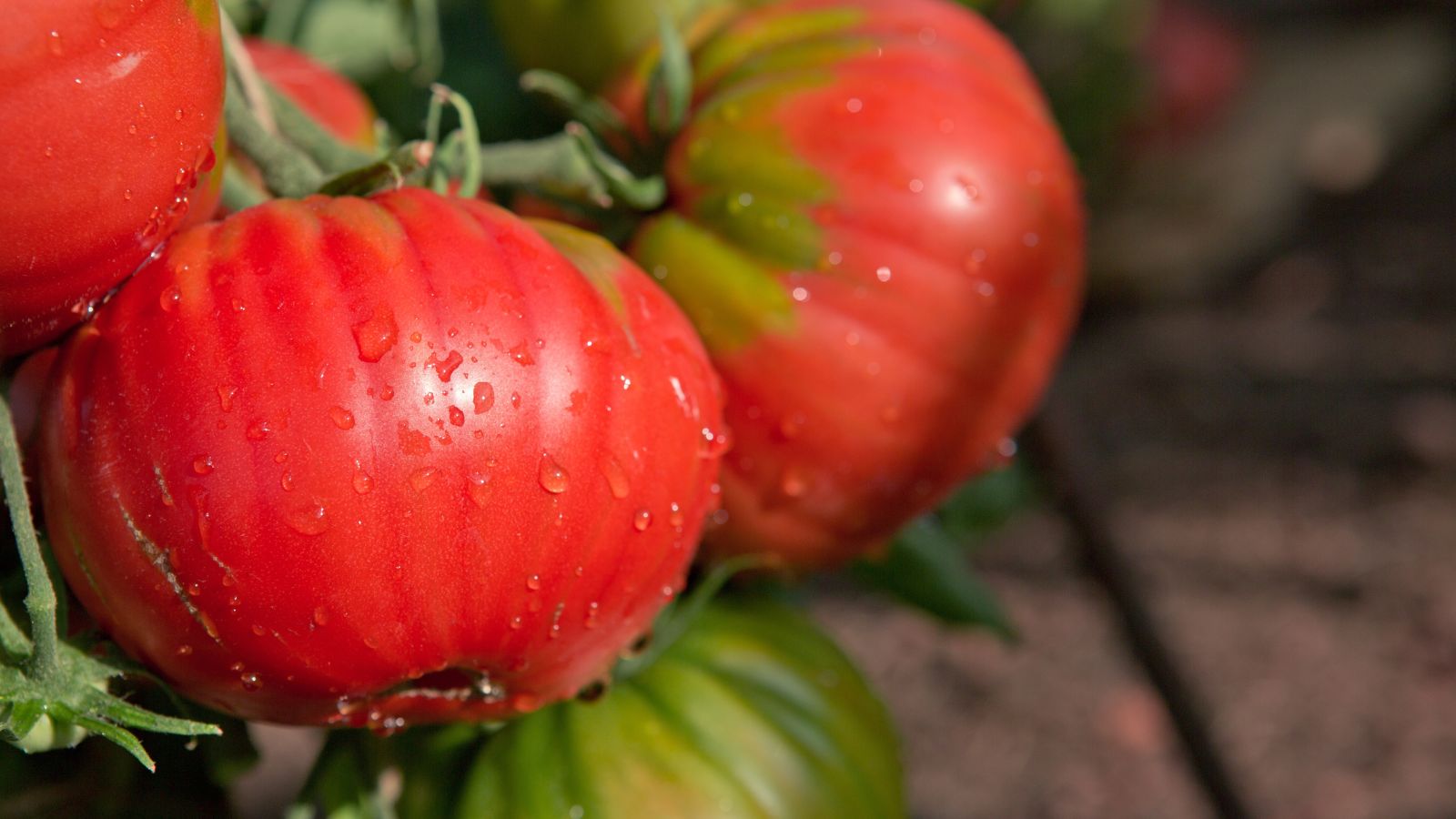 These meaty fruits hail from Transylvania.
These meaty fruits hail from Transylvania. An heirloom from the city of Cluj in Transylvania, Romania, ‘Puszta Kolosz’ produces large red fruits with slight ribbing at the shoulders. The name ‘Kolosz’ is the Hungarian name for Cluj, and ‘Puszta’ means prairie, so the name is an homage to the variety’s birthplace.
‘Puszta Kolosz’ tomatoes grow to between one and two pounds and have an excellent, balanced flavor. The flesh is extremely meaty with very few seeds, so you don’t have to worry about seeds and pulp dripping from sandwiches.
‘Brandywine’
 Provide a cage or trellis to support these indeterminate vines.
Provide a cage or trellis to support these indeterminate vines.One of the most popular heirlooms, ‘Brandywine’, is a large, meaty tomato that has been around since the late 1800s. This variety received a big boost when Seed Savers Exchange included the seeds in its 1982 catalog. Deep pink or red brandywine tomatoes are the most common, but you can find yellow shades.
All types of ‘Brandywine’ plants are indeterminate and have potato-type leaves that lack serration. I recommend using a trellis or cage to support the plants and keep the vines and foliage off the ground. Remember to water regularly throughout the growing season, and avoid sudden changes between dry and wet soil, as these shifts can cause cracking.
Look for ripe fruits around 80 days after transplanting. You can pick the tomatoes when they’re half-ripe and let them fully ripen off the vine if you’re concerned about cracking or bug damage.
‘Pineapple’
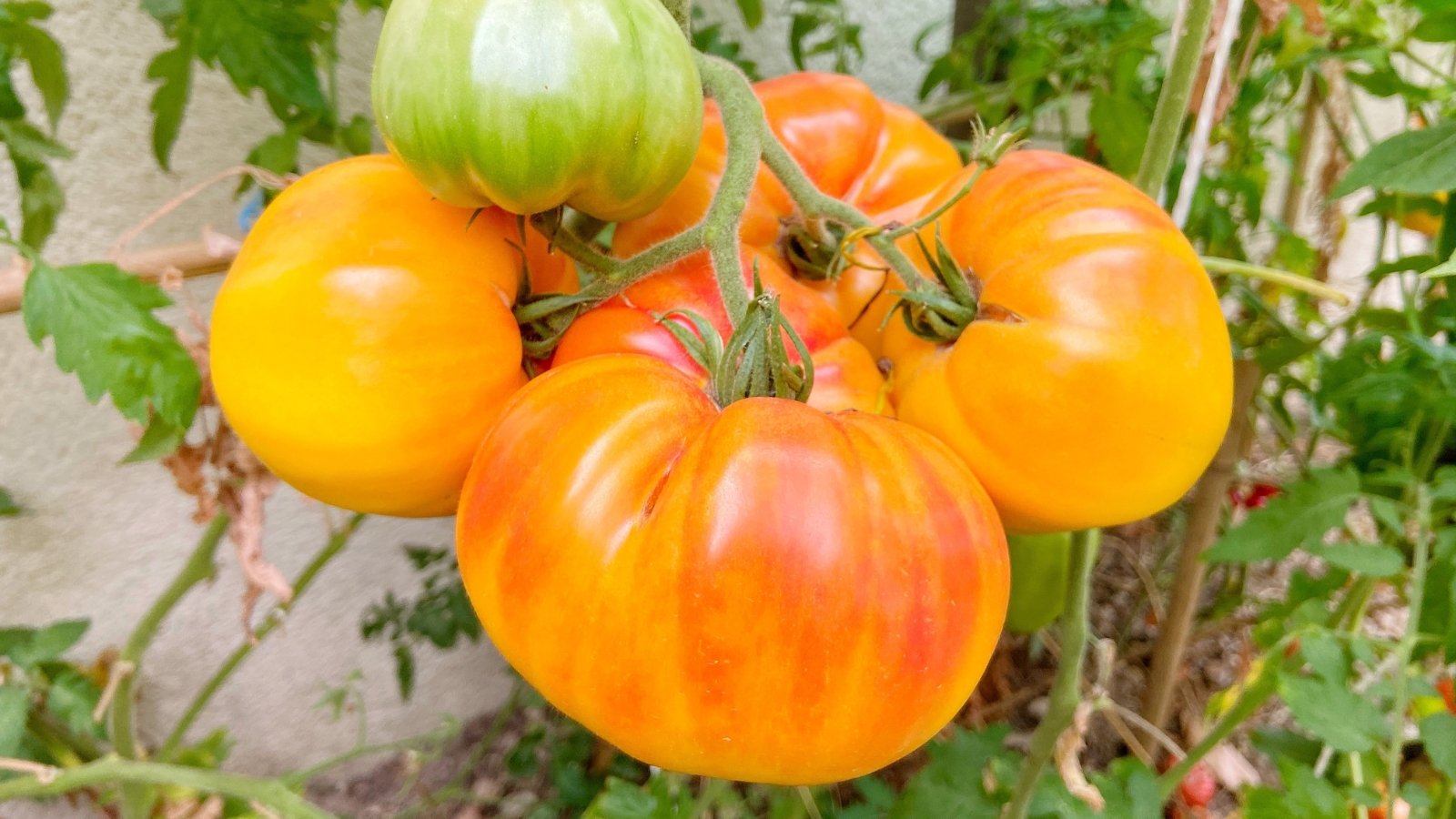 Enjoy the fruit flavor of Pineapple tomatoes.
Enjoy the fruit flavor of Pineapple tomatoes. These tomatoes don’t taste like the tropical fruit they’re named after, but they do have a sweet and slightly fruity flavor. They have a deep yellow flesh that’s highly marbled with red, resulting in a beautiful display when sliced. ‘Pineapple’ tomatoes average one pound, but they can grow to over two pounds.
Like most of the biggest tomato varieties, ‘Pineapple’ is indeterminate. Providing the plants with support is key to keeping the foliage off the ground and preventing disease.
‘German Johnson’
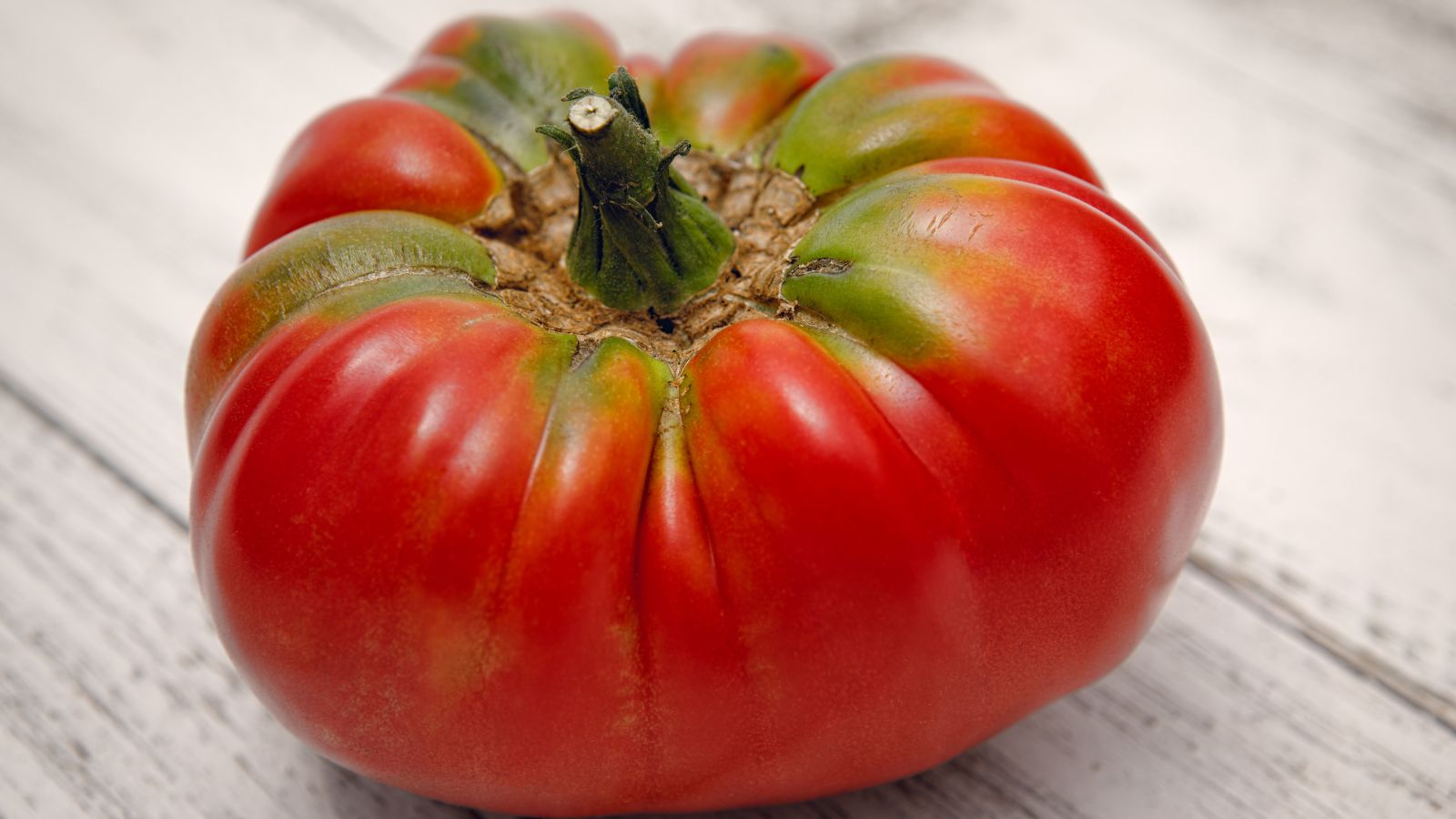 Sweet flavor and creamy texture make German Johnson a favorite.
Sweet flavor and creamy texture make German Johnson a favorite. Pink tomatoes are among my favorites, and ‘German Johnson’ is my top pick for a large, pink tomato. The fruits look very similar to ‘Pink Brandywine,’ but are a bit smaller. They make up for this smaller size with increased productivity and higher yields.
Although ‘German Johnson’ tomatoes aren’t as big as ‘Brandywine,’ they can still grow over a pound. That means a single slice is perfect for sandwiches or burgers, and one tomato is enough for an entire bowl of tomato salad.
The fruit’s flavor is rich and acidic with undertones of sweetness. It has a creamy, meaty texture and few seeds, making it a pleasure to work with in the kitchen.
‘Big Brandy’
 Plant Big Brandy for big tomatoes in little time.
Plant Big Brandy for big tomatoes in little time. With a name like ‘Big Brandy,’ it’s not surprising that this variety makes the list of the largest tomatoes. The deep pink, slightly ribbed tomatoes grow close to a pound, and thinning the flowers can lead to even larger fruits.
This variety is a cross between two favorites: ‘Big Dwarf’ and ‘Brandywine.’ This cross leads to a prolific plant that pumps out tomatoes for multiple months. The plants begin producing about 75 days after transplanting, so you can look forward to a long harvest season in warm climates.
‘Striped German’
 Yellow fruits with a red blush are ornamental as well as delicious.
Yellow fruits with a red blush are ornamental as well as delicious. Big, red fruits often get the spotlight when it comes to record-setting tomatoes, but you can also find other colors of large tomatoes. ‘Striped German’ is a large heirloom that produces bright yellow fruits with a prominent red blush. Their flavor is sweet and less acidic than many other large tomato varieties, and the texture is super smooth.
You can expect most ‘Striped German’ fruits to be at least 12 ounces, and fruits regularly grow over a pound. They begin to ripen around 80 days after transplanting and continue to produce new fruits for multiple weeks or even months.
Like with many large tomatoes, the fruits are susceptible to cracking, especially on the stem side. These cracks don’t take away from the tomatoes’ flavor, but they serve as an entry point for harmful pathogens. You can help prevent cracks by avoiding fluctuations in soil moisture.
‘Beefsteak’
 Beefsteak tomatoes can weigh up to two pounds.
Beefsteak tomatoes can weigh up to two pounds. You’ve probably heard people refer to large, slicing tomatoes as beefsteak varieties, but the ‘Beefsteak’ is also its own cultivar. This is one of the biggest tomato varieties that produces red fruits that grow between one and two pounds.
‘Beefsteak’ is an indeterminate type, so plan to provide it with some type of support to keep your plants from falling over. A wire tomato cage, t-post and twine, or a box made of wooden stakes can work well. This support will also help prevent the heavy fruits from falling to the ground.
‘Giant of Siebenburgen’
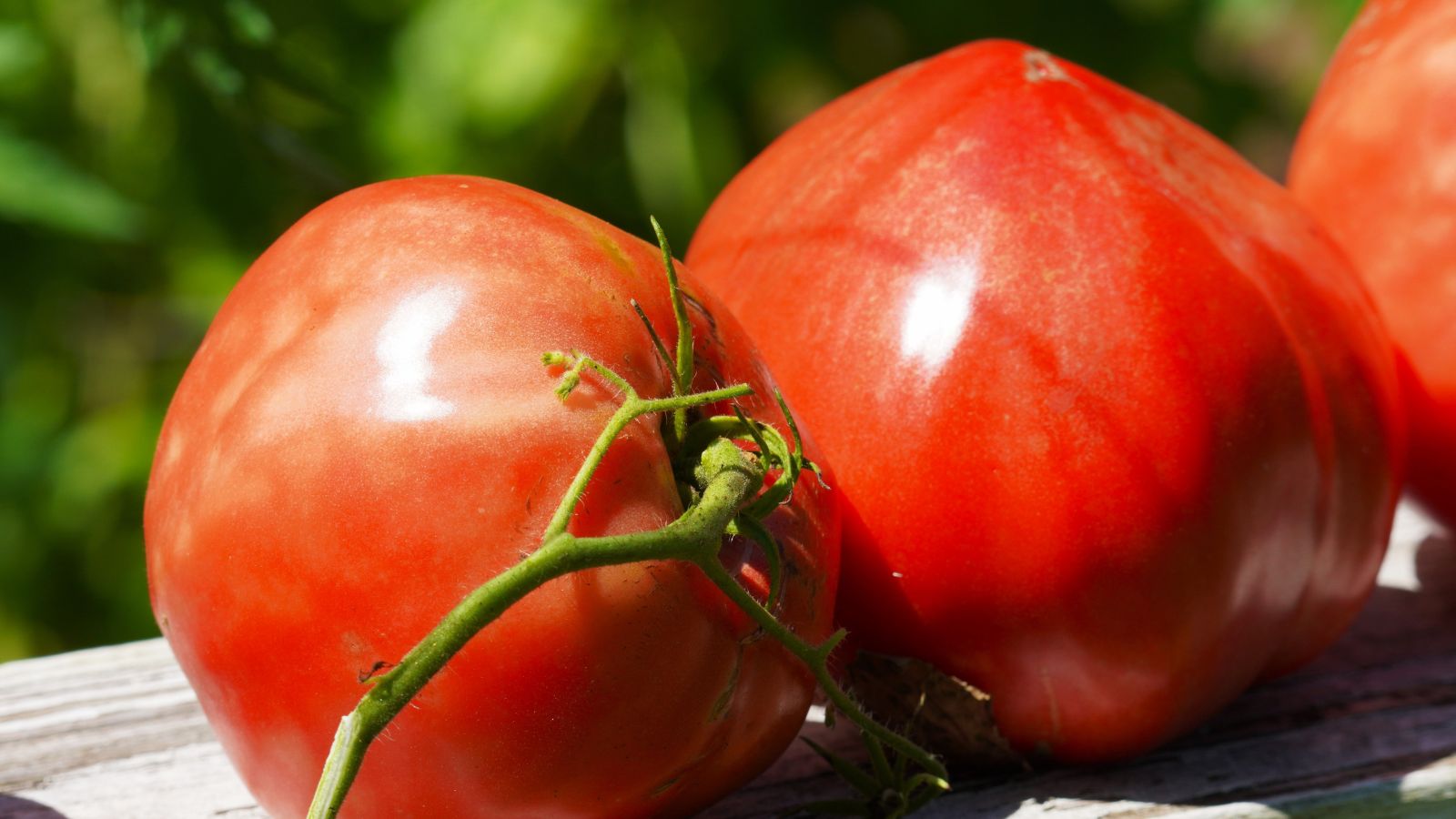 Firm, meaty flesh characterizes this oxheart tomato.
Firm, meaty flesh characterizes this oxheart tomato. From the town of Siebenburgen in Transylvania, Romania, this variety’s fruits regularly weigh over a pound. It’s a red oxheart type, with a wide base and narrow shoulders.
Like most oxhearts, it has a firm, meaty flesh with a great flavor. Although you can eat this variety raw, it’s best when cooked down into sauces or soups. The firm flesh also holds up well in salsas and diced tomatoes.
The plants take 80 to 85 days after transplanting to produce tomatoes. Therefore, you should plant them in the ground as early in the season as possible.
‘Dr. Wyche’s Yellow’
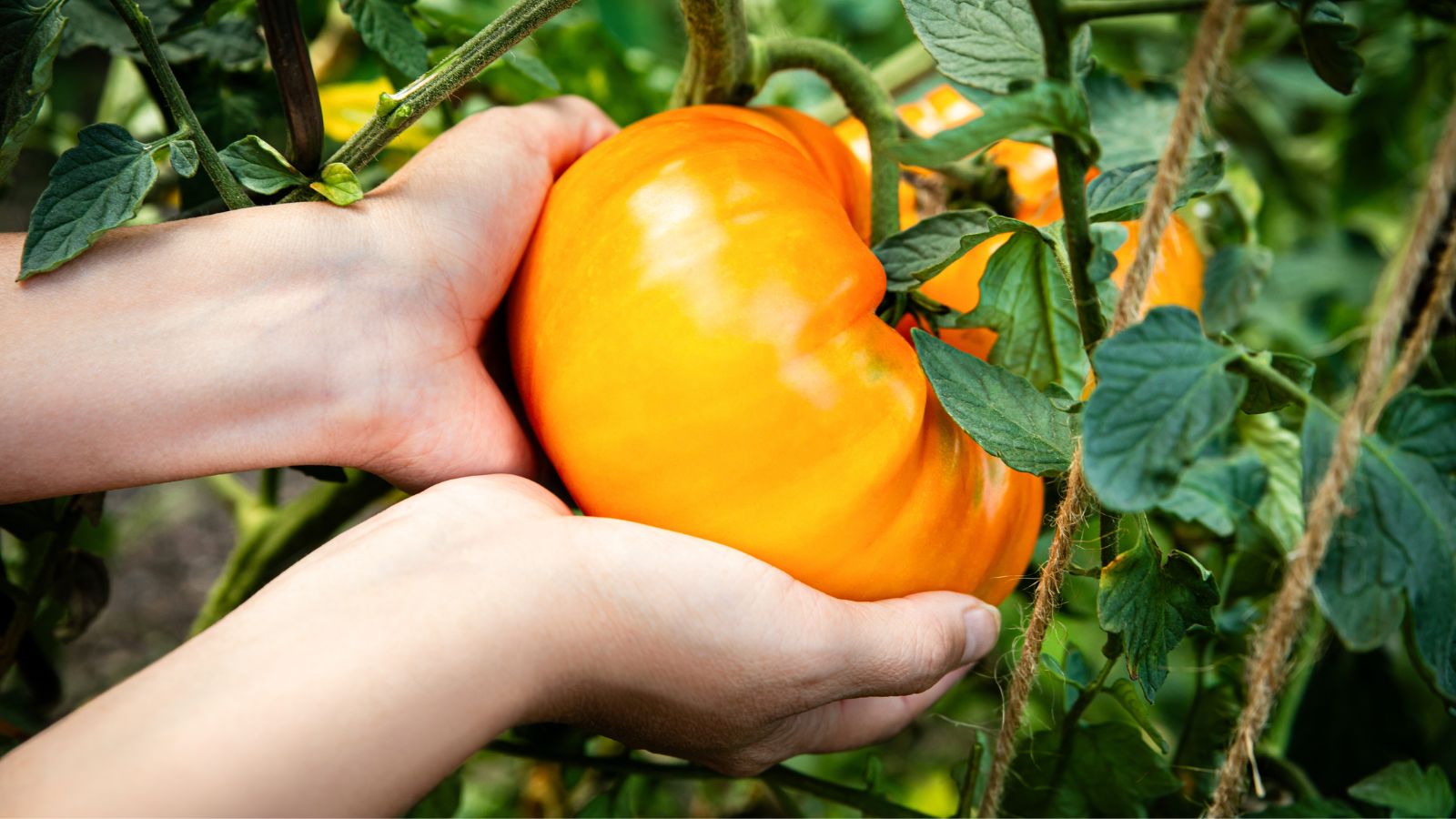 Try Dr. Wyche’s Yellow for tropical flavor in a bright yellow package.
Try Dr. Wyche’s Yellow for tropical flavor in a bright yellow package.While other yellow tomatoes on this list are streaked with red, ‘Dr. Wyche’s Yellow’ is a solid, deep color that’s more light orange than yellow. It’s named after Dr. John Wyche, who was an owner of the Cole Brothers Circus.
The fruits average around one pound and have an extremely smooth texture and sweet flavor. The solid color might not be as exciting as some striped and speckled tomatoes, but the rich and almost tropical flavor isn’t boring. The plants are heavy producers and take about 80 days to mature.
‘Aunt Ruby’s German Green’
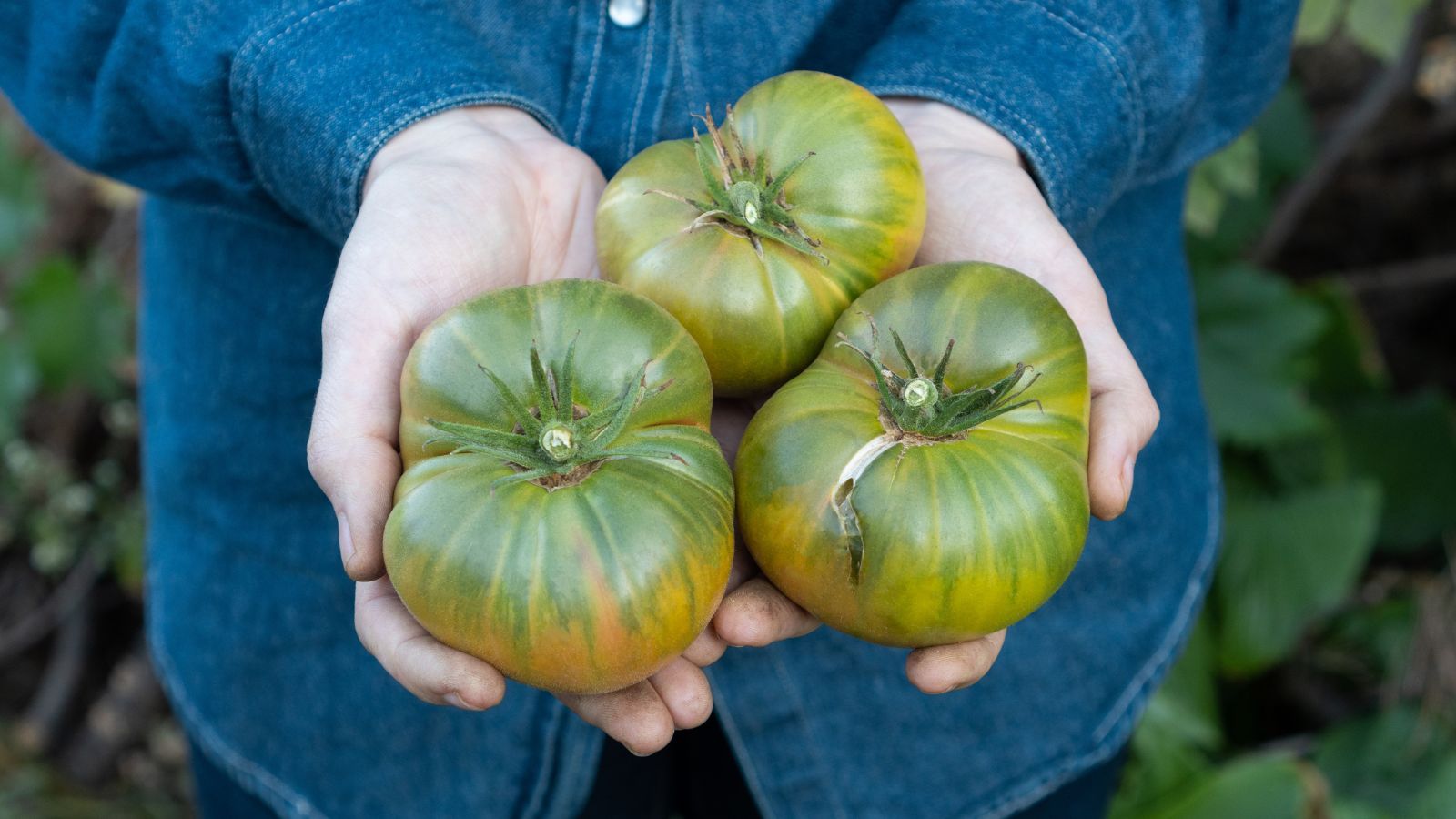 This variety retains its green color even at peak ripeness.
This variety retains its green color even at peak ripeness.Most tomatoes start out green before maturing to their ripe color, whether that’s red, orange, or yellow. ‘Aunt Ruby’s German Green’ changes color only slightly as it matures, retaining much of its green hue when fully ripe. You can use the faint yellow color and soft texture as signs that the tomatoes are ready to harvest.
This heirloom produces large fruits that often weigh over a pound. You can expect the plants to produce their first ripe fruits around 85 days after transplanting.
Since this variety produces fruits that only show a slight change in color, it can be difficult to spot ripening tomatoes near the center of the plant. Checking the fruits a few times a week will help you avoid missing perfectly ripe fruits.


 2 weeks ago
22
2 weeks ago
22





















 English (US) ·
English (US) ·  French (CA) ·
French (CA) ·